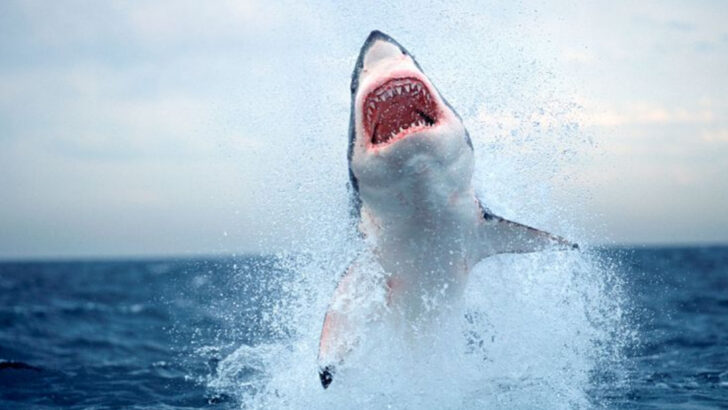Wild animals don’t follow scripts—they steal the scene every time.
One moment they’re still as statues.
The next, they’re sprinting, soaring, or striking with jaw-dropping force.
Nothing in a zoo, movie, or nature documentary can fully prepare you for the raw magic of seeing them where they truly belong.
This isn’t about cute poses or camera angles.
It’s about instinct, power, and wild beauty unfolding in real time.
From snow leopards leaping through cliffs to elephants rumbling across dusty plains—these creatures are anything but predictable.
Nature’s best performances happen off-grid, far from tourists and fences.
Ready to witness 25 animals that demand your full attention, just by being themselves?
Let’s go where the wild things rule.
Snow Leopard

In the chilly heights of the Himalayas, the elusive snow leopard roams with an air of mystery. Its thick fur, patterned with rosettes and spots, provides perfect camouflage against the rocky terrain. Known as the “ghost of the mountains,” this solitary predator is rarely seen, adding to its mystique.
The snow leopard’s powerful build allows it to leap great distances, making it an agile hunter. Its piercing blue eyes seem to reflect the icy peaks it calls home. Conservation efforts are crucial to protect this majestic creature, threatened by habitat loss and poaching.
Blue Whale
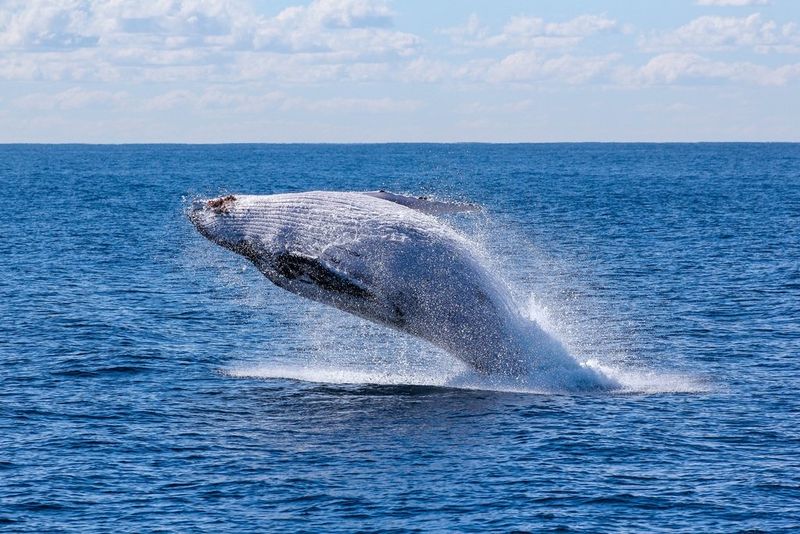
The blue whale, an ocean giant, is renowned for its sheer size. As the largest animal ever known to exist, its heart alone weighs as much as a car. These gentle behemoths glide through the ocean with a grace that belies their enormity.
Their deep, resonant calls can be heard for miles underwater, facilitating communication across vast distances. Feeding primarily on tiny krill, blue whales consume up to four tons of this small prey daily. Protecting these magnificent creatures is vital, as they face threats from ship strikes, fishing nets, and climate change.
African Elephant
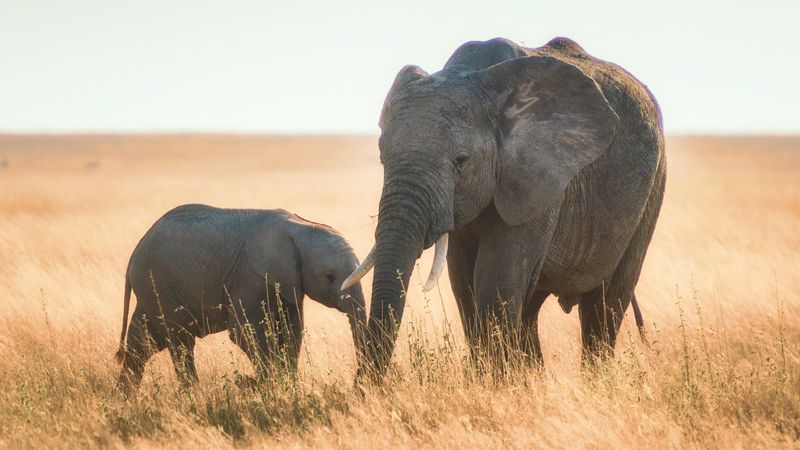
With its immense size and gentle demeanor, the African elephant is a symbol of majesty and power. These intelligent creatures form complex social structures, led by experienced matriarchs who guide their herds through the vast savannahs.
Using their trunks with dexterity, elephants communicate, gather food, and express emotions. Their tusks, while valuable to poachers, are essential tools for digging and foraging. Preserving their natural habitat is critical to ensure their survival, as they play a key role in maintaining ecological balance within their environment.
Harpy Eagle
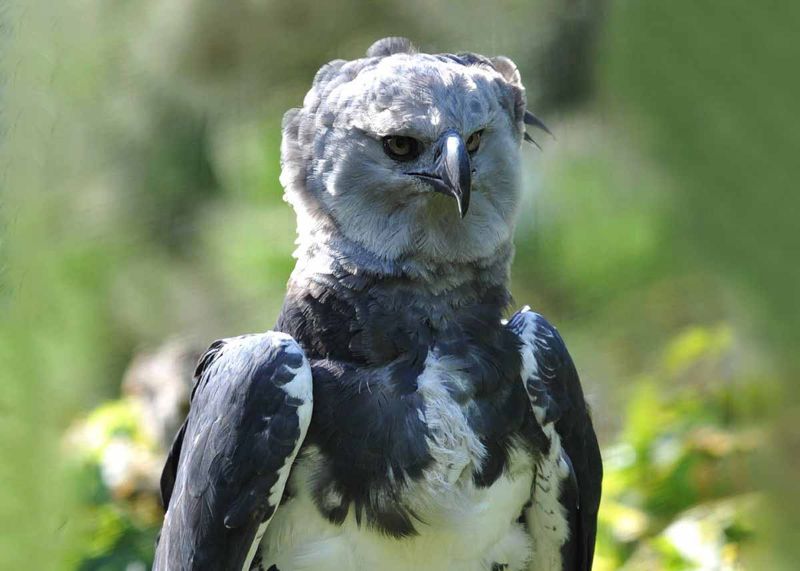
Dominating the canopy of the Amazon rainforest, the harpy eagle is a formidable predator. With its striking crown of feathers and massive talons, it exudes power and elegance. This apex hunter relies on stealth and surprise, swooping down on unsuspecting prey from above.
Harpy eagles play a pivotal role in their ecosystem, controlling populations of their prey. Their distinctive calls resonate through the forest, marking their territory. As deforestation encroaches on their habitat, these magnificent birds face an uncertain future, demanding concerted conservation efforts.
Polar Bear
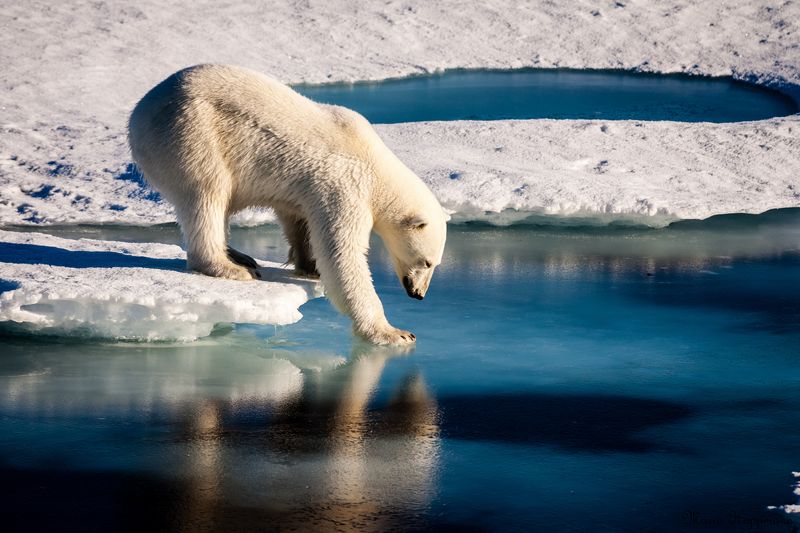
In the stark, frozen wilderness of the Arctic, the polar bear reigns supreme. Its thick, white fur provides essential insulation against the freezing temperatures, while blending seamlessly with the surrounding ice.
These apex predators are expert swimmers, traversing vast distances in search of seals, their primary prey. The melting ice caps threaten their existence, reducing the hunting grounds needed for survival. Efforts to mitigate climate change are crucial to preserve the delicate balance of the Arctic ecosystem and protect this iconic species.
Mandarin Duck
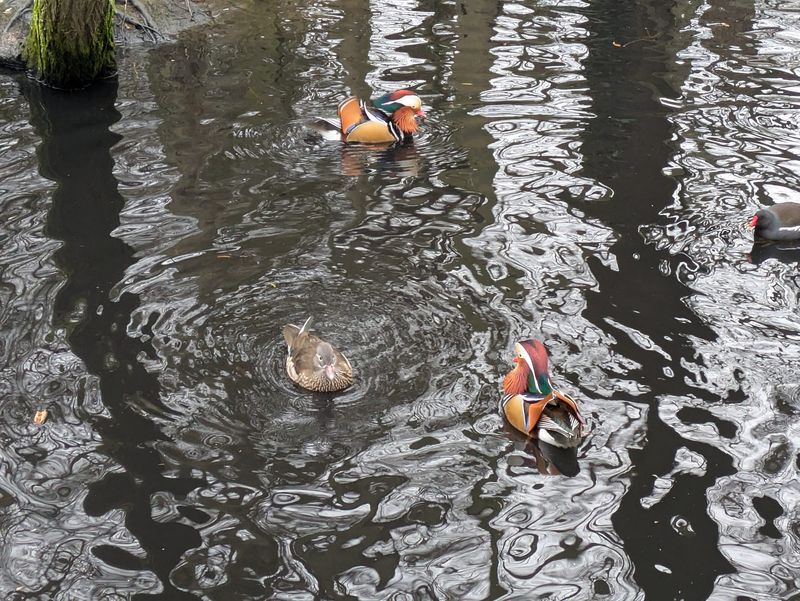
The mandarin duck, with its dazzling array of colors, is often considered one of the world’s most beautiful birds. Native to East Asia, it thrives in wooded ponds and rivers, where it attracts attention with its striking appearance.
Males boast an iridescent plumage of orange, purple, and blue, making them stand out during mating season. Their courtship displays are a spectacle of nature, full of elegance and charm. Despite their beauty, mandarin ducks face threats from habitat destruction, emphasizing the need for habitat protection.
Komodo Dragon

On the sun-drenched islands of Indonesia, the Komodo dragon dominates as the world’s largest lizard. With a fearsome reputation, these reptilian titans can grow over ten feet long, possessing a venomous bite lethal to their prey.
Komodo dragons employ ambush tactics, patiently waiting to overpower their targets. Their keen sense of smell helps them locate carrion from miles away. As top predators, they maintain the delicate balance of their island ecosystem. Habitat loss and human encroachment pose significant threats to their continued existence.
Great White Shark
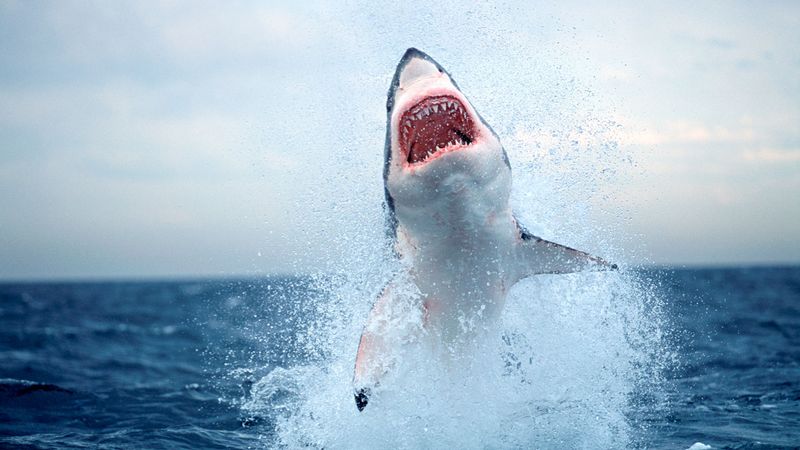
The great white shark, a legend of the sea, commands both fear and fascination. As an apex predator, it patrols the oceans with unrivaled authority. Its powerful jaws and keen senses make it a formidable hunter.
Great whites often travel vast distances, guided by an innate understanding of the ocean’s currents. Despite their fearsome image, these sharks play a vital role in marine ecosystems by maintaining the balance of species. Protecting them from overfishing and habitat destruction is key to the health of our oceans.
Bald Eagle
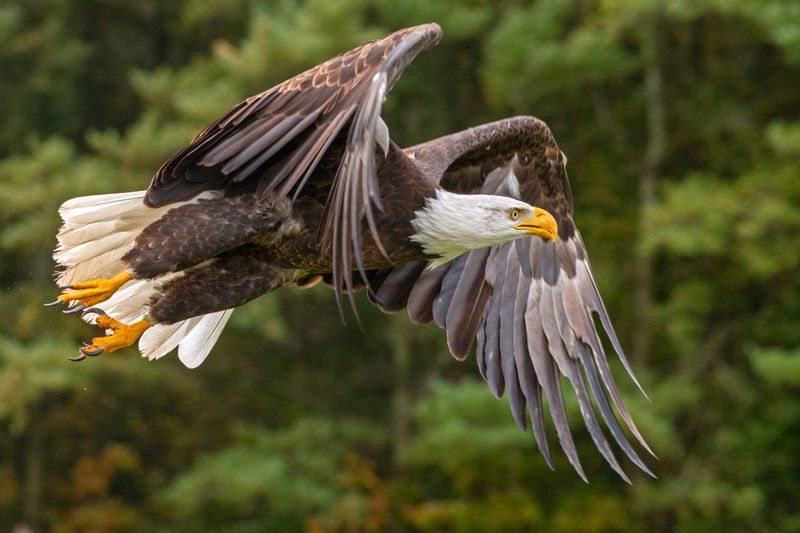
With a wingspan that commands respect, the bald eagle is a symbol of freedom and strength. Found across North America, these regal birds are often seen soaring above forests and waterways, hunting fish and small mammals.
Their keen vision enables them to spot prey from great heights, executing swift, precise dives. Once endangered, conservation efforts have helped bald eagle populations rebound, a testament to the power of environmental stewardship. Their majestic presence continues to inspire awe and admiration wherever they are found.
Giant Panda
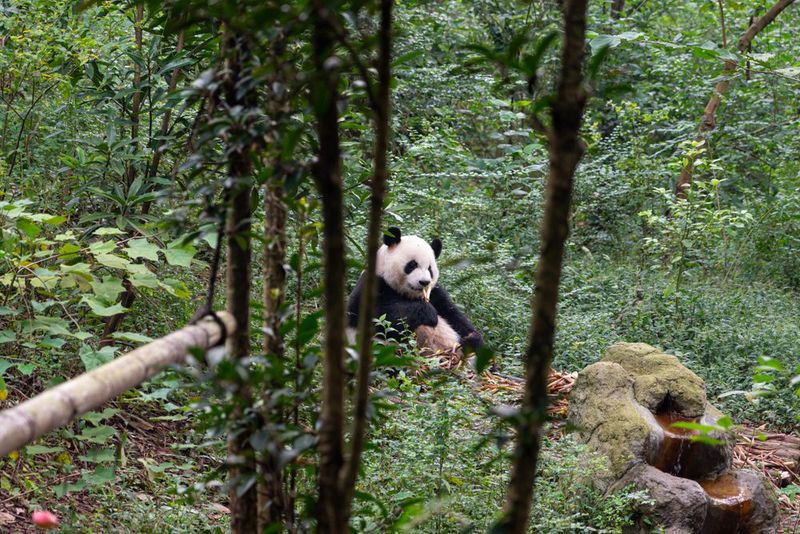
The giant panda, with its distinctive black and white coat, is an enduring symbol of conservation. In their bamboo forests of China, these gentle giants spend much of their day feasting on bamboo, their primary diet.
Pandas possess a unique thumb, aiding in the grasping of bamboo stalks. Though naturally solitary, they communicate through vocalizations and scent markings. Habitat loss and low reproductive rates pose significant challenges to their survival. Conservation initiatives continue to be pivotal in ensuring the future of this beloved species.
Orangutan
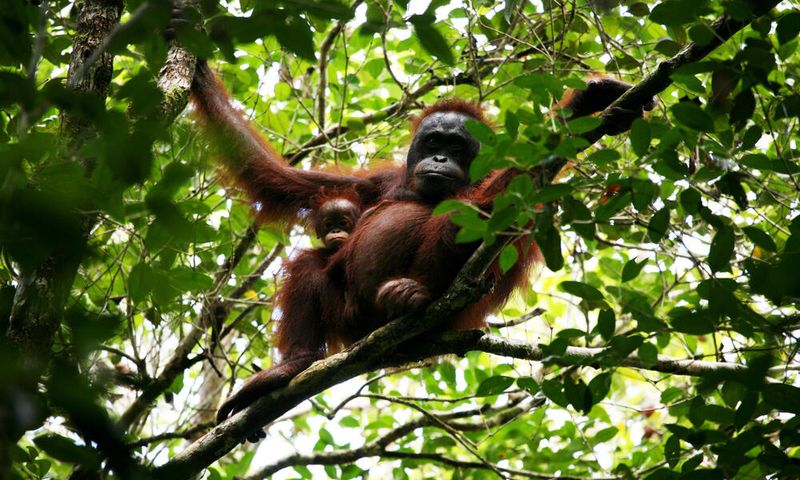
In the verdant rainforests of Borneo and Sumatra, the intelligent orangutan moves with remarkable dexterity. Known for their expressive faces and complex social behaviors, they share a close genetic kinship with humans.
These arboreal apes spend most of their lives in trees, using their long arms to swing gracefully between branches. Orangutans are under threat from deforestation and the illegal pet trade, highlighting the urgent need for conservation measures to protect their habitat and ensure their survival in the wild.
Cheetah
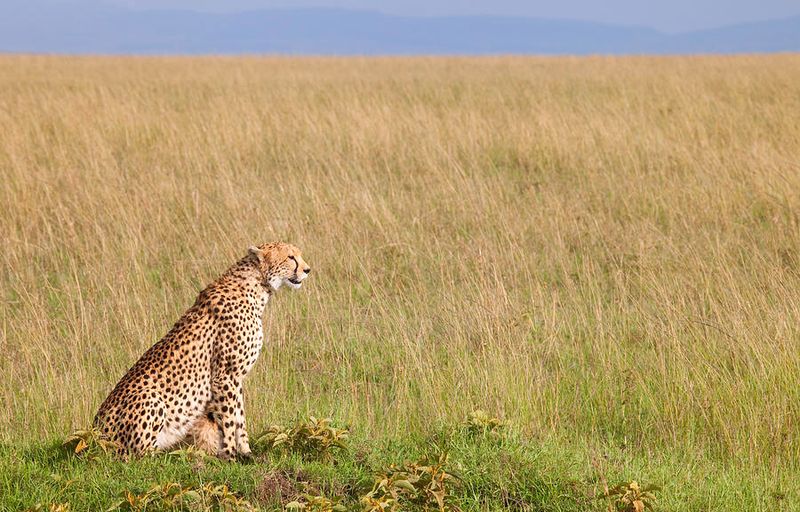
The cheetah, world’s fastest land animal, captivates with its exceptional speed and grace. Built for sprinting, it can reach speeds of up to 70 mph in short bursts while pursuing prey in the open savannah.
Its slender, aerodynamic frame and long legs provide optimal acceleration, while distinctive black “tear marks” under its eyes reduce glare during high-speed chases. Cheetahs face numerous challenges, including habitat loss and human-wildlife conflict, necessitating robust conservation strategies to preserve this iconic species.
Emperor Penguin
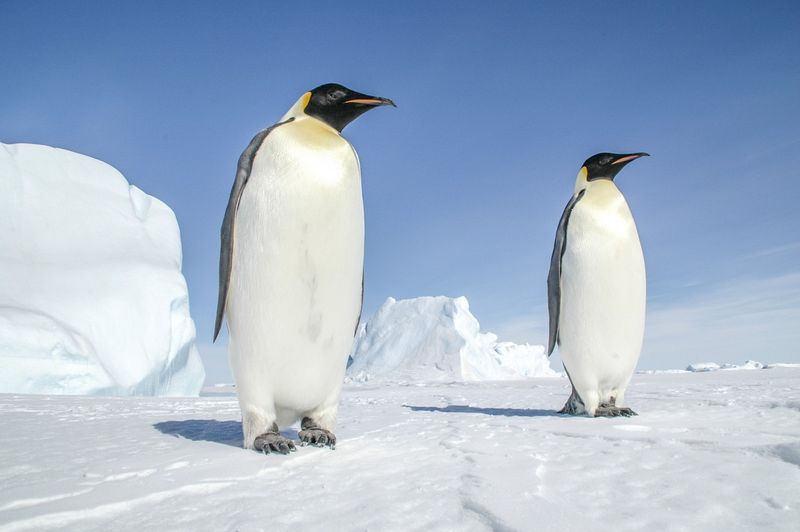
In the brutal cold of Antarctica, emperor penguins stand as a testament to resilience. These flightless birds endure extreme conditions, huddling together for warmth during harsh winters.
Their striking black and white plumage, with hints of yellow, aids in camouflage while swimming. Emperors trek long distances over ice to reach breeding colonies, where they take turns incubating eggs in bitter winds. Raising awareness about climate change is vital to safeguard their icy habitat and ensure their survival in a warming world.
Humpback Whale
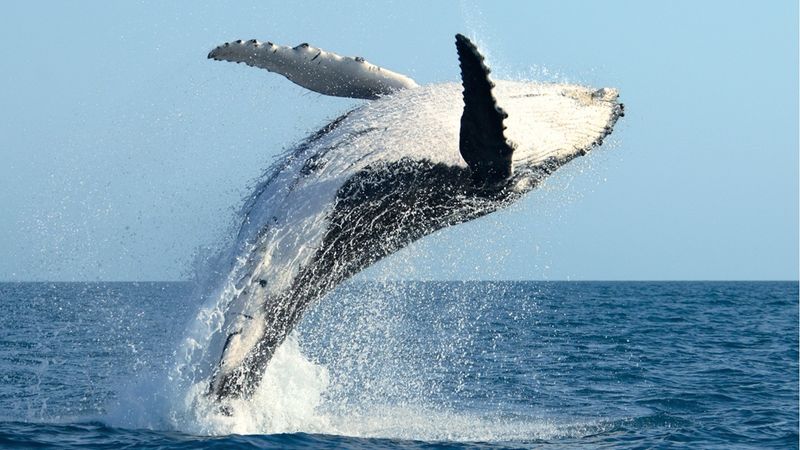
The majestic humpback whale is known for its acrobatic breaches and complex songs. These oceanic giants migrate vast distances, from polar feeding grounds to tropical breeding waters.
Each humpback’s tail is unique, akin to a fingerprint, enabling researchers to identify individuals. Their haunting melodies echo through the seas, playing a role in communication and possibly mating. Conservation efforts aim to protect these incredible creatures from the threats of ship collisions and entanglement in fishing gear, ensuring their stories continue.
King Cobra
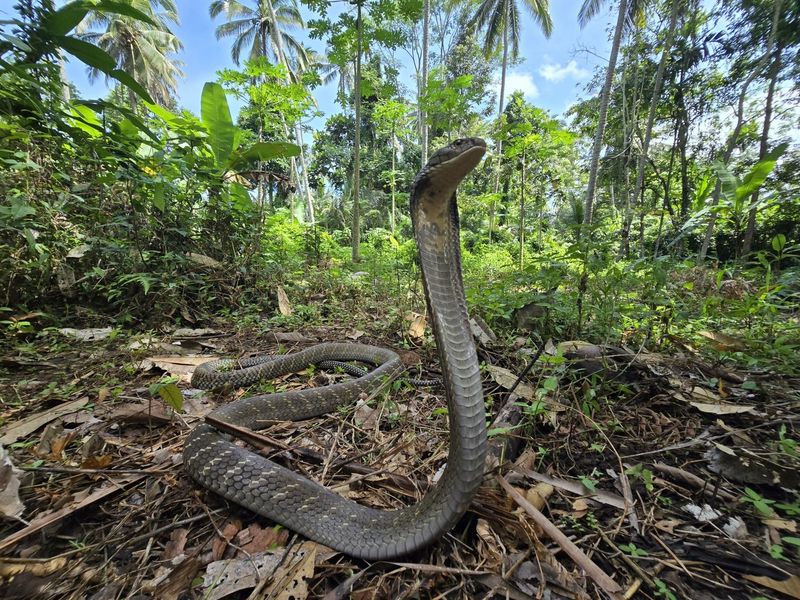
In the dense jungles of India, the king cobra commands both fear and respect. As the longest venomous snake, it possesses a potent bite capable of subduing large prey, including other snakes.
With heightened senses and an ability to stand tall, it can detect threats from afar. The king cobra’s hood, when expanded, is a warning display that deters potential predators. Habitat destruction and human conflict threaten their existence, underscoring the need for focused conservation efforts to preserve this iconic serpent.
Red Fox
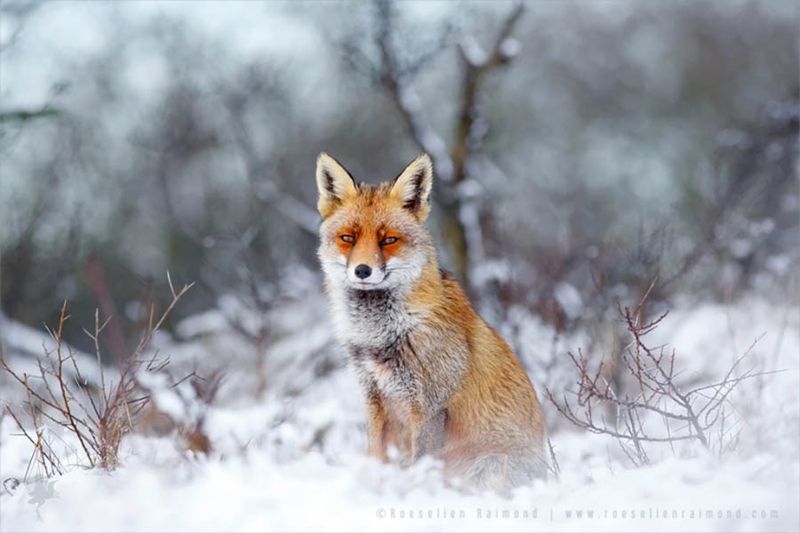
The red fox, with its fiery coat and cunning nature, is a master of adaptation. Found across diverse habitats, it thrives in forests, grasslands, and even urban areas, showcasing its resourcefulness.
Foxes are solitary hunters, employing stealth and agility to capture small prey. Their bushy tails aid in balance and warmth, while sharp ears detect the faintest sounds. Despite their adaptability, red foxes face challenges from habitat loss and hunting, necessitating balanced conservation approaches to secure their future.
Mountain Gorilla
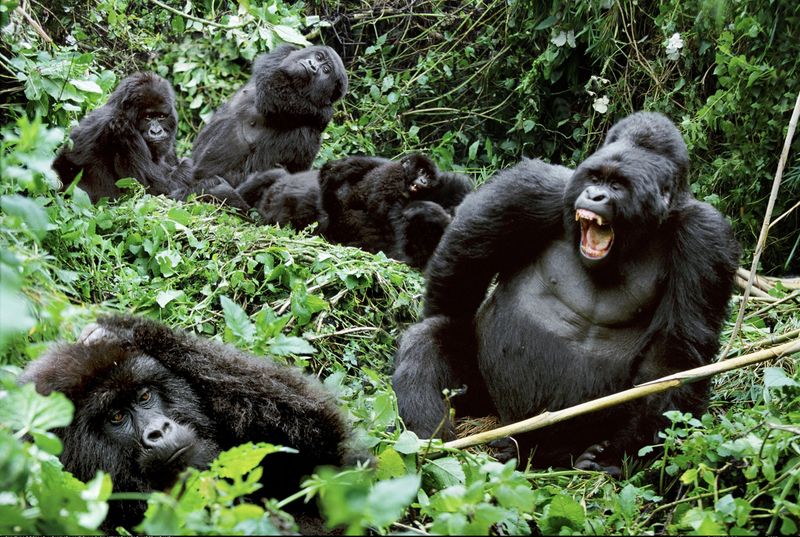
In the misty forests of central Africa, the mountain gorilla reigns supreme. These gentle giants possess a calm demeanor and social structure centered around family groups led by a dominant silverback.
Gorillas communicate through vocalizations and gestures, demonstrating remarkable intelligence and empathy. Despite their strength, they face threats from habitat destruction and poaching. Conservation initiatives have made strides in protecting these magnificent creatures, yet continued efforts are vital to ensure their survival in their natural habitat.
Majestic Lion

The lion, often referred to as the king of the jungle, embodies strength and majesty. In the open savannahs of Africa, these social cats form pride groups, led by dominant males with magnificent manes.
Lions are skilled hunters, working collaboratively to take down prey. Their roars echo across the plains, asserting their presence. Despite their iconic status, lions face threats from habitat encroachment and human conflict. Conservation efforts focus on safeguarding their natural habitats and ensuring their continued reign as apex predators.
Spectacled Bear
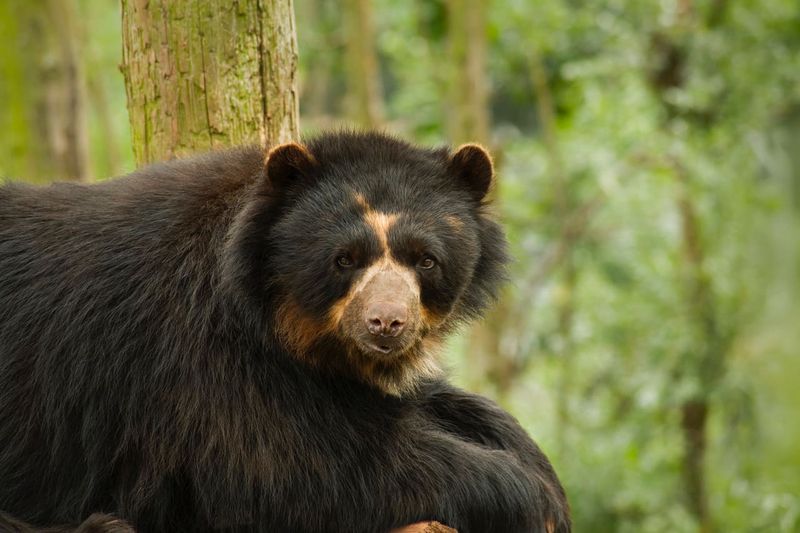
In the cloud forests of the Andes, the spectacled bear is a solitary and elusive resident. Named for the unique markings around its eyes, it blends into the lush landscape as it forages for fruit and vegetation.
These bears are adept climbers, often ascending trees to escape predators or reach food. As the only bear native to South America, they play a crucial role in their ecosystem. Threatened by habitat loss and fragmentation, spectacled bears benefit from targeted conservation strategies to protect their mountainous habitat.
Galápagos Tortoise
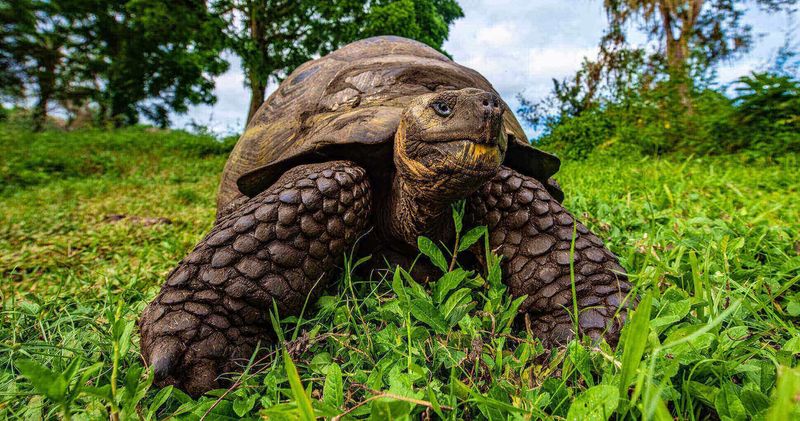
The Galápagos tortoise, a symbol of evolutionary wonder, roams the volcanic islands with a measured pace. These ancient reptiles can live over a century, witnessing the changing landscape of their unique home.
Their massive shells and sturdy limbs are adaptations to their environment, allowing them to traverse varied terrains. Once on the brink of extinction, conservation efforts have helped revitalize their populations. Protecting their habitat ensures that future generations can marvel at these living relics of natural history.
Macaw Parrot
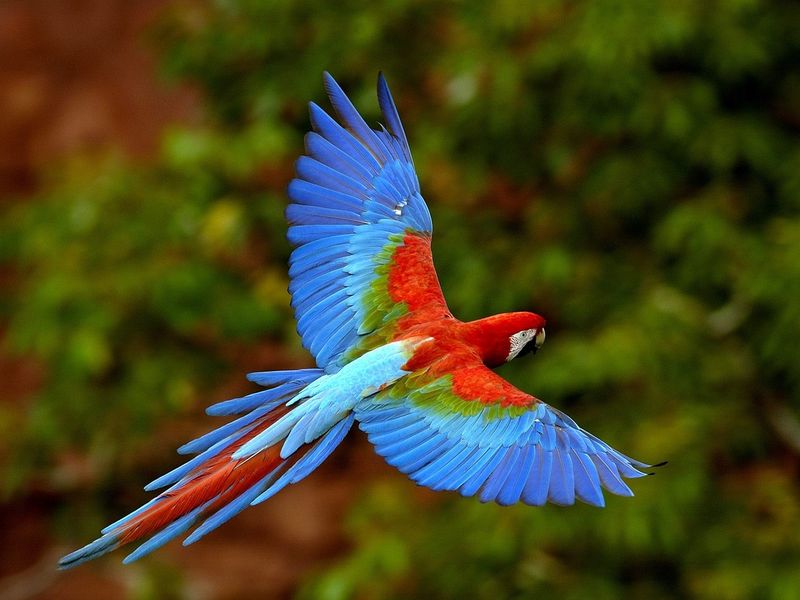
Among the canopy of the Amazon rainforest, the macaw parrot captivates with its vivid plumage and vocal antics. Intelligent and social, these birds form lifelong bonds, communicating through a range of sounds.
Macaws play a vital role in seed dispersal, contributing to the health of their ecosystem. Their striking appearance makes them targets for the pet trade, posing a threat to wild populations. Conservation initiatives aim to protect their habitats and regulate trade, ensuring these avian wonders continue to thrive in the wild.
Siberian Tiger
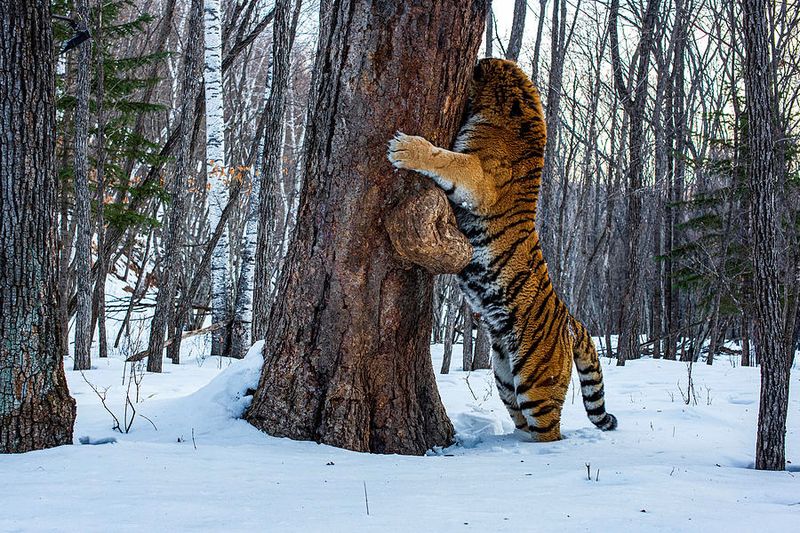
In the remote forests of Siberia, the Siberian tiger stands as the largest of its kind. With its striking stripes and robust build, it is a powerful and efficient hunter, capable of taking down large prey.
These solitary cats patrol vast territories, using scent markings to communicate. Poaching and habitat fragmentation threaten their survival, leading to concerted efforts to protect their forest habitats. Ensuring their future requires a balanced approach to conservation that addresses both ecological and human needs.
Peacock

The peacock, with its extravagant plumage, is a marvel of nature’s artistry. Its iridescent tail feathers, spread in a magnificent fan, captivate audiences and woo potential mates.
Native to the Indian subcontinent, peacocks inhabit forests and gardens, where their vivid colors stand out against the greenery. This bird’s elaborate courtship displays are a testament to its role in cultural symbolism and the natural world. Protecting their habitats ensures these magnificent displays continue to enchant future generations.
Albatross
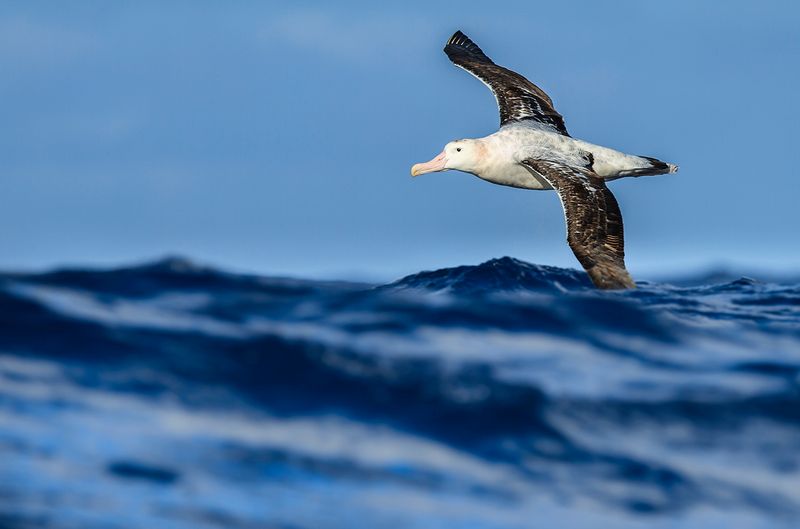
With the widest wingspan of any bird, the albatross is a master of the skies. These ocean wanderers traverse vast distances, riding wind currents with little effort.
Albatrosses are symbols of freedom, their long journeys taking them across the world’s oceans. However, they face threats from bycatch in fishing operations and plastic pollution. Conservation initiatives focus on reducing these threats, ensuring that albatrosses continue their majestic flights across the globe, inspiring wonder and respect.
Axolotl
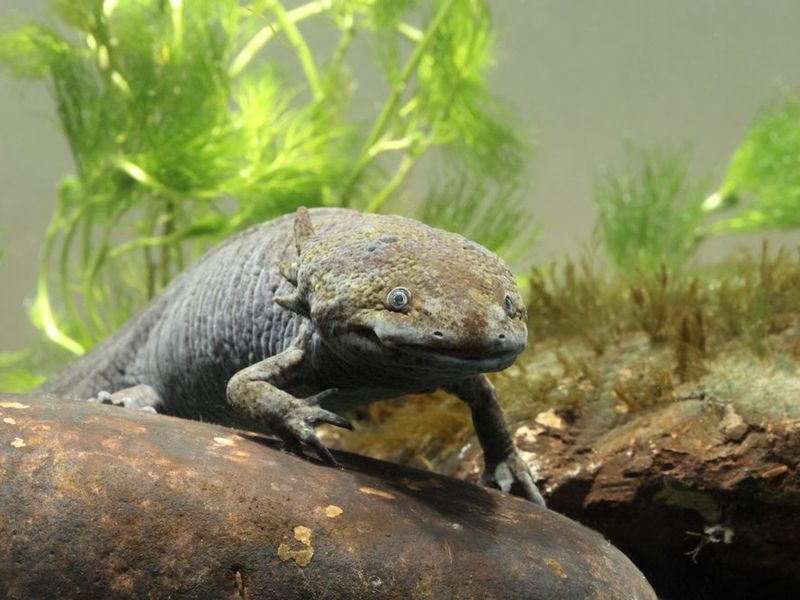
Beneath the calm waters of Mexico’s lakes, the axolotl thrives in its aquatic realm. Known for its regenerative powers, this amphibian can regrow entire limbs, a trait that fascinates scientists worldwide. Its feathery gills and perpetual smile give it an almost mythical appearance.
Often referred to as the “Mexican walking fish,” the axolotl is not a fish at all, but a neotenic salamander. This means it retains juvenile features throughout its life, a characteristic known as neoteny.
Sadly, habitat destruction has placed the axolotl on the endangered list, making conservation efforts crucial to its survival.

